One of the highlights of our visits to my grandparents in Coorg, as a child, was a trip to the Paadi Iguthappa* temple in Kakkabé. Though we made visits to the temple at other times of year too, the ones that were most special to me happened around the time of the harvest festival of Puthari, usually in early December.
Set into a wooded hill, with waves of terraced paddy fields wrapping around the base of it, the temple radiates a calm and simple beauty. The presiding deity of the temple is Iguthappa, known as “the giver of grain” and his promise to the people of Coorg is that as long as he is honoured, the land will prosper.
Our journey to the temple would begin early in the morning, with the vehicles being loaded with produce from the farms and estates of the family members, to be offered there, in thanks for the bounty of the harvests**. The air would fill with the mingled fragrances of sacks of rice, coffee beans, bananas, pepper, cardamom, tamarind, home made ghee, and assorted vegetables. A quick stop at the shops near the local bus stand for lamp oil, jaggery, lengths of freshly strung buds of jasmine, and we would be off, meandering down the winding road that leads towards Mangalore. This was always the start of a special day.
Having arrived early, the various poojas would usually be completed well before noon, but it was customary to stay on at the temple for lunch. The people of Coorg are often commended for their hospitality, and the priests who look after the temple are no exception. There is always a warm reminder from them that those who come to Iguthappa should never go away without having eaten. Their home is a short walk away from the temple, and it is here that all the cooking is done to feed visitors to the temple.
In the time between the ceremonies and the serving of lunch, the adults would make their way to the stone parapet and sit in the shade of an ancient tree, to chat and relax, breathing in the gentle fragrance of sampigé and frangipani, mingled with tantalizing whiffs of the lunch being cooked on the wood stoves down below.
Being typically restless children, we would wander away to the forest area behind the temple where a small stream flowed over the slopes of rock. Stepping barefoot into that cool, clean water, looking up into the tall trees shimmering against the clear December sky, and watching flights of blue-winged parakeets fly chattering by overhead, I like to think that I was thankful for that bounty as well.
Lunch was eaten in the cool shade of the stone shelter beside the temple. It was the simplest of meals, prepared from produce donated by visitors to the temple. On freshly cut banana leaves, we were served a rice payasa (rice cooked in milk and jaggery) and kajjaya (fritters made from rice, bananas and jaggery) This was followed with boiled rice, a delicately spiced kootu curry (mixed vegetable stew with spiced coconut masala) and a palya (dry fried vegetable) made from say, ivy gourd. Sometimes there would be a small banana to finish. That was it. And yet, it lingers in the memory with a richness that belies its simplicity.
Lunch over, we would make our way back to the car, carrying the prasada given to the devotees – coconuts, a few flowers a, smudge of sandalwood paste, twists of paper with kuri (sacred ash) in them and a small parcel of kajjaya. Then, the slow drive home again, well nourished in body and spirits renewed.
That was a perfect day, a picnic for the soul. 🙂
More about those kajjayas , coming soon!
* For an informative account of the history of the temple, read this article by author C.P. Belliappa.
** Produce from the current harvest would be carried to the temple for the festival in March of the following year.

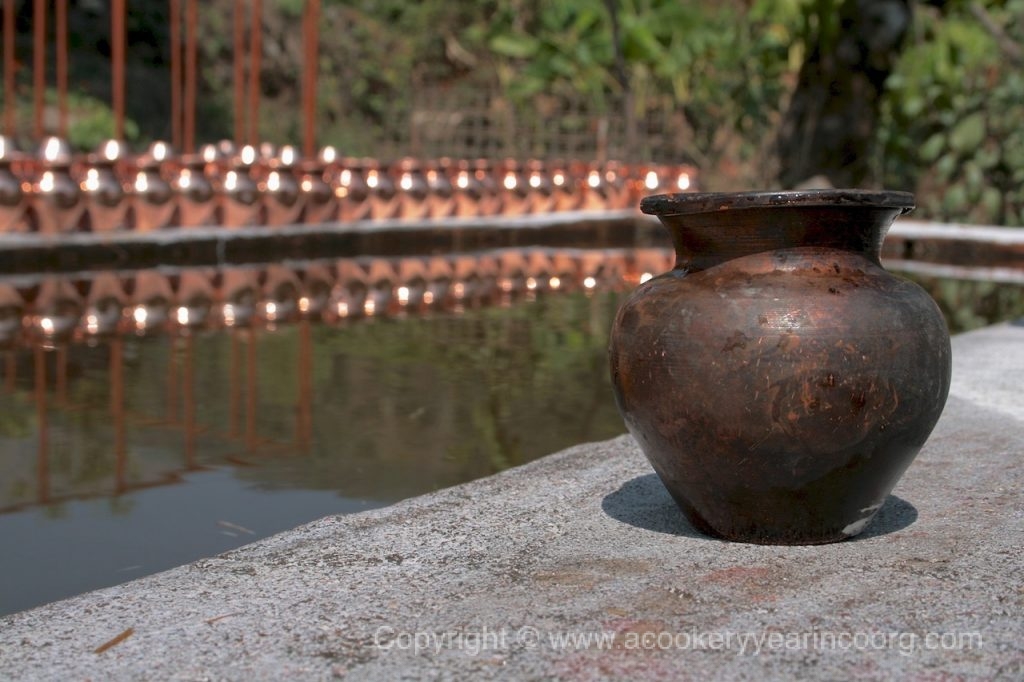
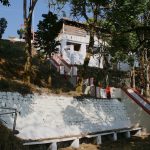
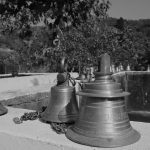
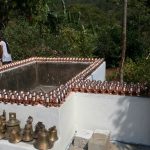
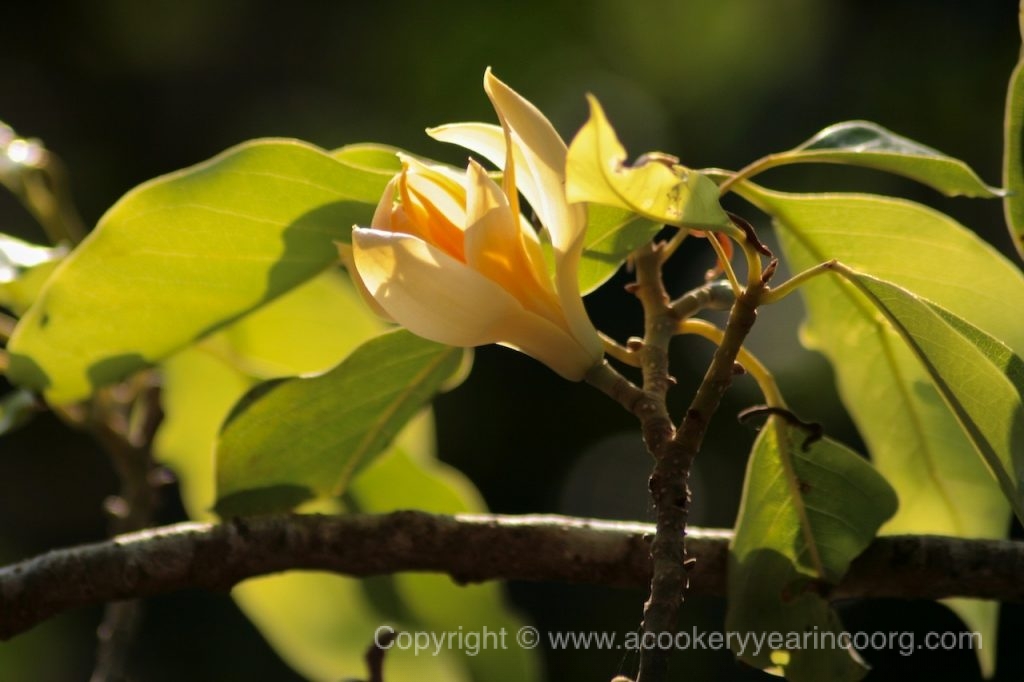



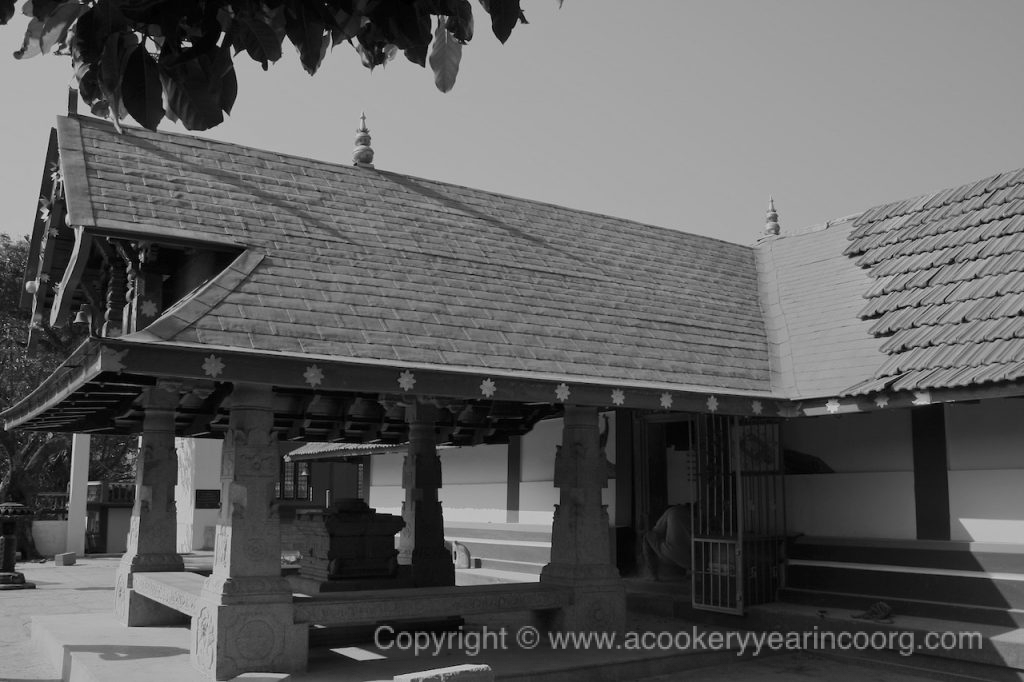



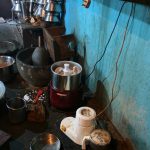
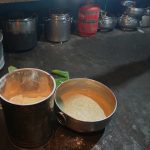
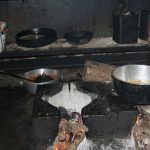
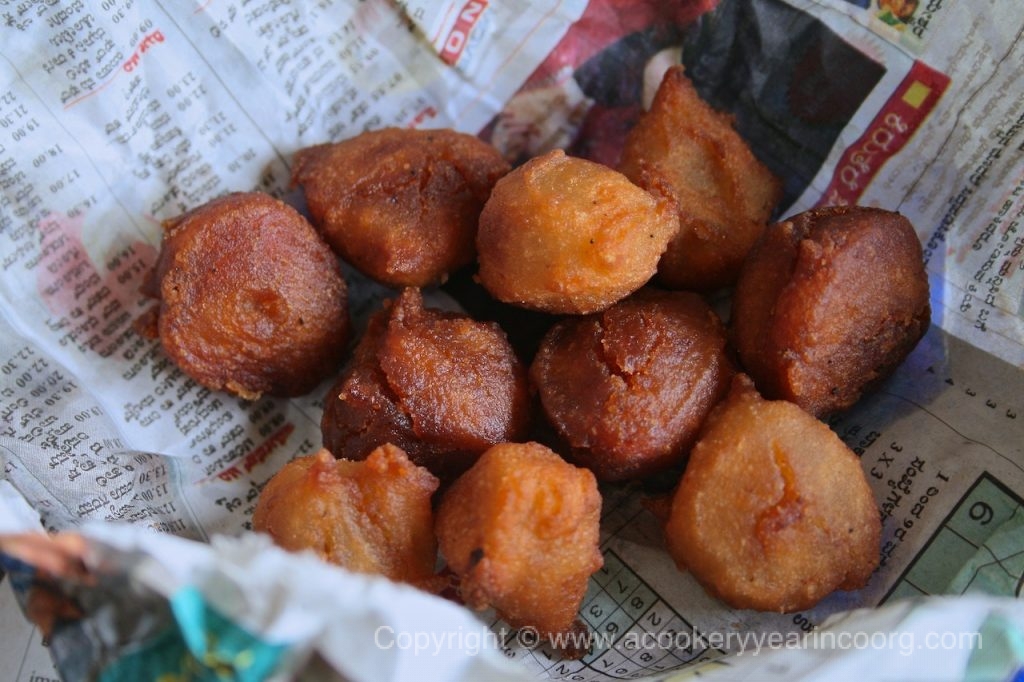
Another evocative piece. Your words really take one back in time. The black and white temple picture reminds me of Kerala temples. And the kajjayas – we call it neyyappam – are a Kerala temple staple. Can’t wait to see your piece on that.
Thank you Ammini! You’re right, the architecture is very similar to that of Kerala temples. There has been a fair bit of renovation done in recent years. Many of the old wooden beams had perished and needed replacing. There are also several new structures to one side of the temple with facilities to cater to the increased number of visitors. In my mind’s eye, I like to remember the small, cozy place, tucked away in the trees. 🙂
This really brought back memories. Mine are a little more fragmented – but this piece just filled in the gaps. Love it.
PS: Most of my memories are around scarfing down kajjayas and angling for more 😀
Thanks, Kay! Well of course it was about kajjayas! If you weren’t so queasy on the drive back home, the little package wouldn’t have made it home intact! 😉